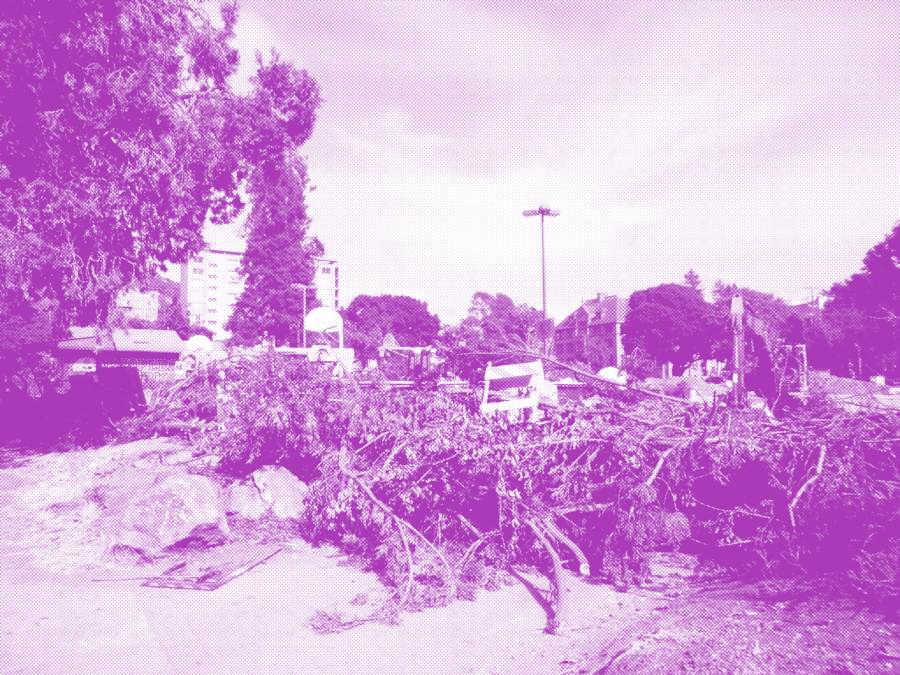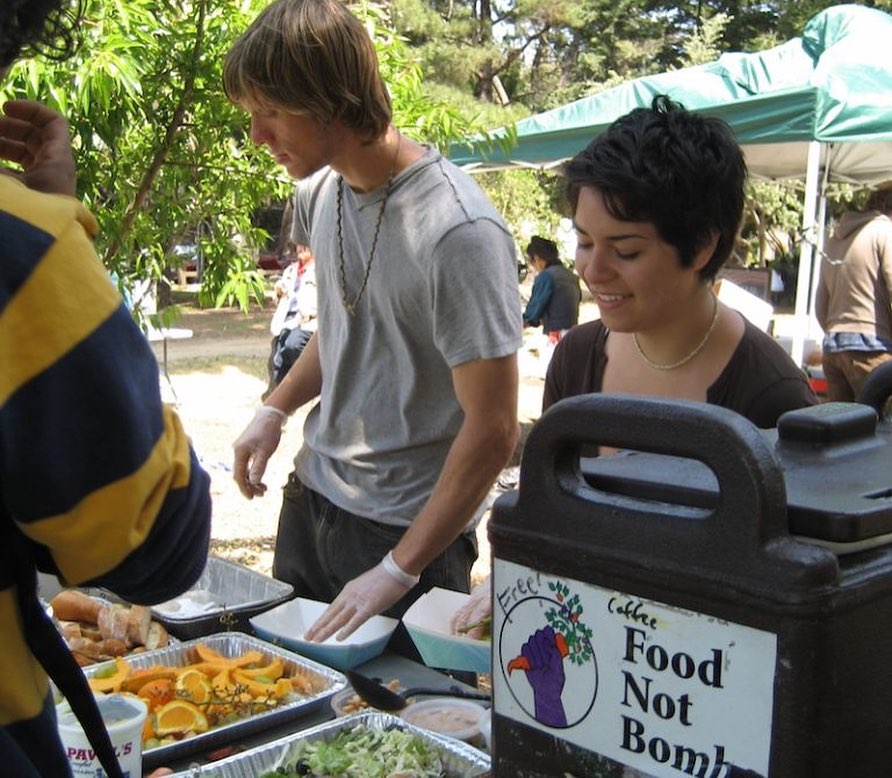People’s Park is Berkeley’s urban green space, community center, arts & culture venue, and liberated patch of land for the landless — 53 years strong!

On the night of August 3, 2022, it was obvious UC police and construction crews weren’t coming to People’s Park with good intentions.
Heavily armed riot police encircled the last tent dweller with a clear message: move or be moved. Police shoved his stuff into bins and forced him out. As the fence quickly went up around the park, many activists were trapped inside. People stood on top of the kitchen, yelling to those outside, as the helicopters started circling.
People cried as they watched an urban forest brought to its knees — trees they had planted, laid under on hot days, or lived under in times of need.
Had the university’s brutal assault succeeded that day, every chance encounter, basketball game, hip-hop show, free meal, or stoned daydream at People’s Park would have been the last. We can’t allow that to happen. Bulldozers and riot police don’t offer opportunities for healing.
The university promotes their plans for People’s Park as a generous offer. But they don’t allow the park’s ‘people’ the autonomy to define what genuine support would look like, or to reject these plans! So we are left with little choice but to put our bodies on the line to stop it.
The university must acknowledge that further attempts to demolish our community and cultural center will be harmful and traumatic. They could create vast opportunities for student housing by confronting the wealthy suburbs surrounding the campus. And they can open their abundant land holdings to the landless!
Before People’s Park was born in 1969, the land between Haste and Dwight streets was cheap housing. The buildings housed students, political organizers, hippies and dropouts, and were a center of the Telegraph Avenue counter-culture scene.
The university was eager to get rid of this scene, which caused constant protests on the campus, so they acquired the entire block through eminent domain. The landowners were told “we’re getting rid of the hippies.” During finals week in fall 1967, they gave everyone a 3-day eviction notice and demolished the entire block.
The ruined foundations and basements became filled with stagnant water, and the old backyards were being used as a muddy parking lot. The students and residents of southside got tired of the eyesore and injuries sustained by children playing in the lot, and decided to take action. Hundreds of people brought in soil, trees, grass sod, and created a park.
A few weeks later, the university stormed the park and fenced it off. The National Guard was stationed 24/7 on the site. On May 15, 1969 35,000 people marched to free the park from the state occupation. Governor Reagan and the UC Regents unleashed police on the crowds, authorizing the use of live ammunition. Hundreds were shot at, 35 seriously wounded, and one died defending this effort to create common land. Governor Reagan doubled down, stating “if it takes a bloodbath, let’s get it over with.”
Eventually activist pressure prevailed, through persistent marches, strikes, and widespread student, faculty, and community support for the park. In 1971 the park was landscaped and green again! The park motto “Everybody gets a Blister” is from this era.
In 1979 a new UC plan to build a fee parking lot was sprung on the public. A machine to take fees was installed, and a portion of the park was paved. The idea seemed to be to claim a little piece, with more to come. With the support of Berkeley’s then mayor, Black socialist Gus Newport, Park defenders rented jackhammers, ripped up the asphalt and the fee machine was bashed and removed. In 1984 the park was made a Berkeley City landmark again under Newport’s leadership.
In 1991, the university tried to re-assert itself over the park with a gradual plan beginning with the installation of sand volleyball courts.
A new wave of organizing began, with the rallying slogan “Defend the Park,” which was shared in coordinated solidarity with organizers at Tompkins Square Park in the Lower East Side of New York City.
Emergency committees were established. Nightly vigils and open meetings were held. As a UC construction team arrived in July, hundreds of protesters gathered to prevent the bulldozer from breaking ground. The final cost to UC of installing one sand volleyball court was $1 million.
One young radical, Rosebud Denovo, took matters into her own hands. With a machete in hand, she forced her way into the chancellor’s mansion. The chancellor wasn’t even there, but that didn’t stop the police from shooting her dead.
Today, the university has a more compelling plan for People’s Park. It involves constructing student housing and some more affordable, low-income units.
UC is betting that students today have forgotten the park’s history, don’t know of its central role as a heart of the street community, or simply are afraid to set foot inside. They have claimed there are no alternative housing sites, despite owning 110 acres at Clark Kerr campus. But hey, that’s close to rich people.
And one thing about rich people, as I was told by a UC Capital Strategies official: “They are really well organized”.
Defend People’s Park!
